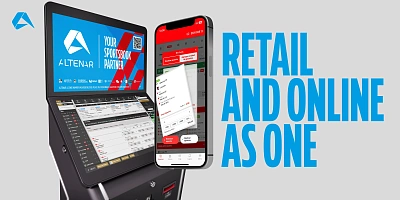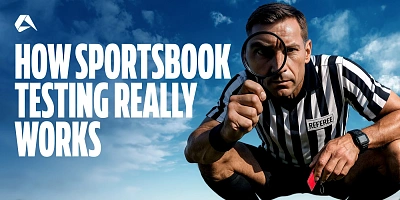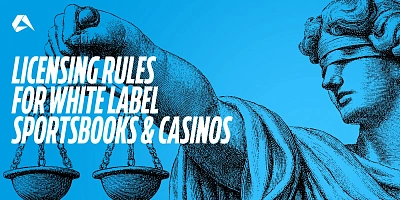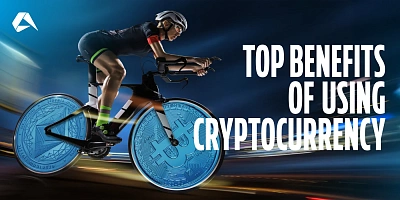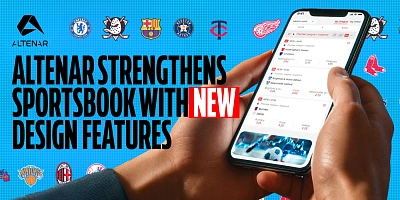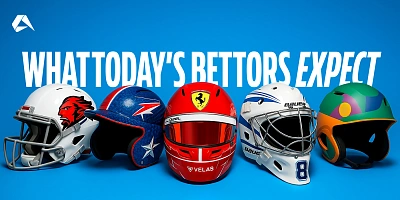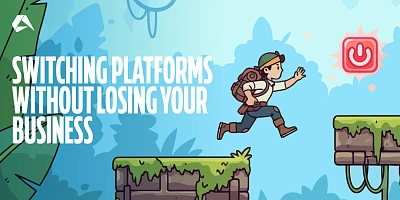Overview Beyond the Badges: How Next-Gen Gamification is Rewriting Sportsbook Engagement
Next-generation gamification is crucial for modern sportsbook engagement, moving beyond ineffective traditional badges and generic missions that fail to resonate with today's mobile-native bettors. Operators are focused on measurable KPI improvements, prioritizing systems that extend session length, increase bet frequency, boost cross-sell rates into other verticals, and successfully reactivate dormant accounts without reducing overall margins.
Unlike rapid casino gameplay, effective sportsbook gamification must align with the psychology of knowledge, risk, and timing inherent in betting. Proven strategies include Bet Streak Challenges (promoting consistency), Risk-Based Missions (driving exploration of higher odds/unconventional markets), Prediction Competitions (building anticipation), and Event-Based Social Leaderboards (leveraging community competition).
The most vital element is personalisation, which transforms gamification into a meaningful driver of loyalty. By tailoring missions based on individual player behaviour, such as preferred sports and stake size, operators ensure challenges feel relevant and achievable, thereby increasing uptake and completion rates. Successful implementation also requires cohesive integration with loyalty systems and a robust, data-rich tech foundation to manage complexity and operational risks.
Ready to level up your sportsbook engagement? Explore the full blog for insider strategies!
For several years now, gamification meant one thing to iGaming operators and professionals. Badges, points, and leaderboards. In the early days of online betting, that was enough to spark interest and excitement. A badge here, a tier upgrade there and so on. It felt new and fresh.
But today’s sports bettors are different. They’re mobile native and accustomed to instant rewards and live experiences integrated into the apps they use every day. Static badges and generic missions are losing their momentum. And if anything, they clutter the interface and can even dilute engagement.
In this guide, we’ll explore how next-generation gamification systems are evolving and reshaping sportsbook engagement. From risk-based missions that align with betting psychology to real-time social competitions that extend session time. More importantly, we’ll look at what operators actually want from gamification, the mechanisms and strategies that deliver measurable benefits, and the commercial trade-offs many operators overlook.
Because in the end, gamification isn’t just about games. We’re designing systems that keep players coming back, without ever losing sight of the wager.
What Operators Really Want from Gamification
Here’s a truth few say out loud. Many operators don’t care about gamification itself. They care about what it delivers. Let’s be blunt. Points, badges, and missions are merely tools. The real interest lies in whether those tools move the KPI metrics that matter.
Does gamification keep bettors engaged long enough to place an extra wager? Does it encourage exploration across verticals, or reawaken dormant accounts with something more enticing than a bonus email? And significantly, does it achieve all this without reducing overall margin or overwhelming casual players?
Generic offers rarely shift the needle where it counts, but when executed strategically, gamification can influence session length, bet frequency, cross-sell rates, and reactivation rates:
Session length and dwell time
Gamification extends session length by creating micro-goals that keep players engaged beyond their initial bets. When missions or challenges align with live events or upcoming markets, bettors remain active longer, increasing opportunities for incremental wagers within the same visit.
Bet frequency per session
Bet frequency rises when gamification encourages action through risk-based missions or streak challenges. Each incremental bet made to achieve a goal increases overall handle, while giving players a sense of progress and purpose beyond simply placing isolated wagers.
Cross-sell into other verticals (casino, live games)
Effective gamification creates natural bridges between sportsbook betting and other products. For example, missions rewarding a sports bet plus a live casino spin incentivize exploration. This cross-vertical activity drives varied spending and deepens player involvement across the platform.
Reactivation of dormant accounts
Reactivation campaigns built around gamified missions re-engage dormant players by offering personalized goals tailored to their historic behaviors. Unlike generic bonuses, gamified reactivation taps into psychological motivators, making the return feel like part of an evolving journey rather than a pushy promotion.
Why generic games fail to move metrics meaningfully
It’s a lesson many brands learn only after investing heavily. Generic badges and points rarely shift these metrics because they lack contextual relevance. This is especially true in sportsbook environments, where relevance drives action. Without personalized goals, real betting alignment, and intelligent triggers, gamification becomes just another feature that is invariably ignored by many, and often fails to justify its operational cost.
What Works in Sports Betting vs Casino
Casino gamification has long relied on incentives like spin-based rewards, random bonus drops, and tiered loyalty systems. These incentives are particularly effective in a slot environment, where gameplay is rapid, repetitive, and designed to provide instant gratification.
Sports betting, however, is fundamentally different. Bettors aren’t spinning reels, they’re making decisions rooted in knowledge, risk, and timing. As shown in the diagram below, while some mechanics overlap, the most effective sportsbook gamification features remain distinct.
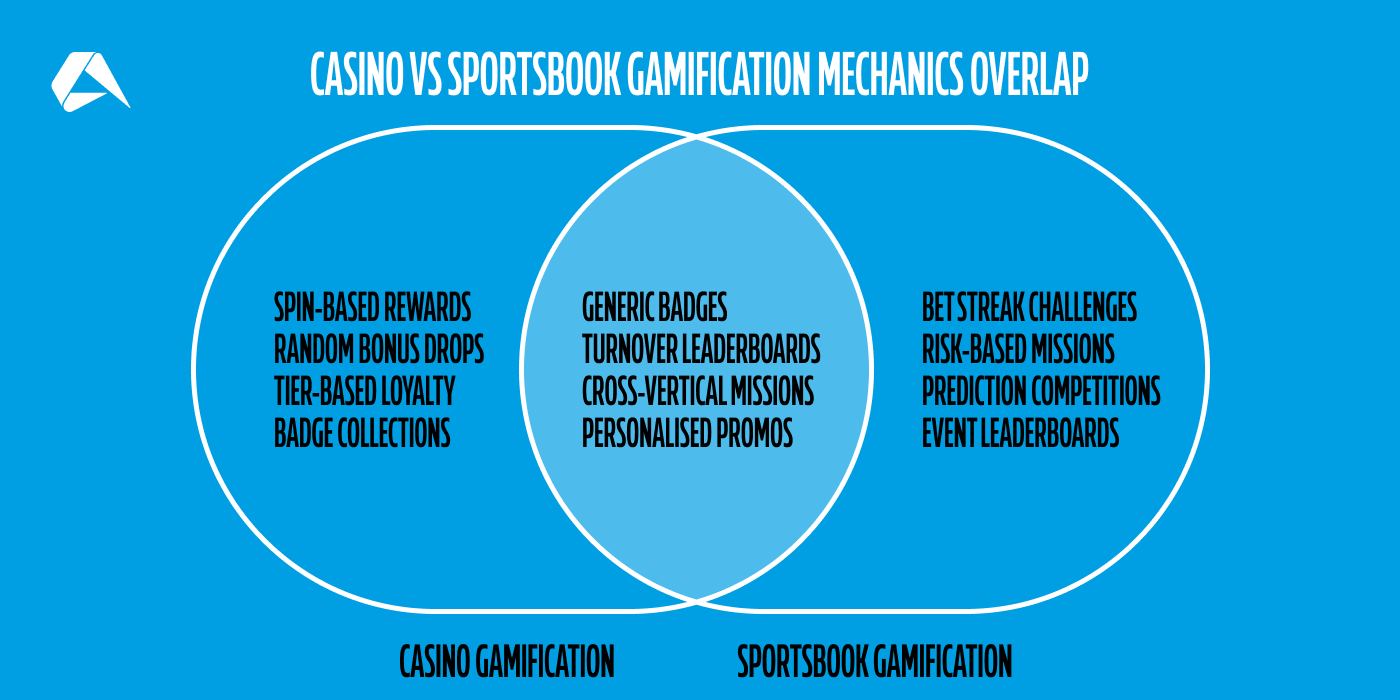
Let’s break down the four proven gamification strategies that align perfectly with the psychology of sports betting:
Bet Streak Challenges
In essence, bet streak challenges reward players for placing consecutive bets, regardless of outcome, or for achieving a sequence of wins. For example, an operator might offer escalating free bets after 3, 5, and 7 consecutive bets placed in a week. This strategy encourages ongoing betting activity and deepens a bettor’s commitment to returning for daily or regular betting sessions. It taps into the psychology of consistency and progression, turning isolated betting actions into something that feels like a personal achievement ladder.
Risk-Based Missions
Risk-based missions incentivize players to explore bets with higher odds or unconventional markets. For instance, a mission might require placing three accumulator bets with combined odds above 5.0 to unlock a bonus. This not only drives bet volume but also broadens activity with markets that a bettor may not usually consider. By rewarding risk-taking in a structured way, operators can strategically manage margin exposure while offering an experience that feels adventurous and potentially more rewarding.
Prediction Competitions
Prediction competitions ask players to forecast outcomes of upcoming matches or events, often structured as free-to-play or low-stakes entry challenges with prizes or bonuses for accuracy. A typical example is a weekly football predictor, where bettors select match results across a league round to win tiered rewards based on correct picks. This strategy builds anticipation ahead of events and drives re-engagement, as players return to check results and claim rewards, even if they aren’t betting directly on every game.
Event-Based Social Leaderboards
Event-based social leaderboards rank players based on betting activity tied to specific events, like the Champions League final or a major UFC fight night. For example, bettors who place the highest number of qualifying bets or achieve the greatest net win on the event day climb the leaderboard for prizes. This approach leverages social proof and competition, making major sporting events feel like community experiences within the sportsbook. In turn, this encourages players to make incremental bets as they compete for top positions and recognition.
Where the two verticals do overlap
With badges, leaderboards, and cross-vertical missions, execution is everything. Generic badges rarely drive meaningful engagement, but when integrated intelligently with real-time betting activity, personalized goals, and meaningful rewards, they become powerful tools to increase session times and bet frequency.
The takeaway is undeniable. What works in casino gaming often does not translate directly to sports betting. Operators looking to elevate engagement need strategies designed for betting behaviors, not just gaming habits.
Personalization
The Key to Effective Gamification
As we have already alluded to, generic missions and blanket challenges can only go so far. Today’s sportsbook bettors want, and often expect, experiences that reflect their individual behaviors, preferences, and betting styles.
Personalization has the capacity to transform gamification elements from superficial decoration into a meaningful driver of engagement. Instead of offering the same bet streak challenge to everyone, operators can tailor missions based on factors such as average stake size, favorite sports, preferred bet types, and historical activity patterns.
For example, a casual football bettor who favors match result markets might receive a mission to place three match result bets this week to unlock a free bet. At the same time, a high-value player with a history of accumulators could be challenged to place two accumulators with combined odds over 5.0 for a tiered bonus. The psychological impact is significant because personalized missions feel achievable, relevant, and rewarding rather than generic or forced.
Personalization also reduces the risk of disengagement. When players encounter irrelevant or overly complex challenges, it is not uncommon for them to just ignore these challenges, which thereby diminishes the purpose of gamification altogether. But when missions and rewards align with how they already enjoy betting, uptake and completion rates rise, driving bet frequency, session length, and loyalty in a productive way.
Ultimately, current trends indicate that the operators seeing the strongest returns from gamification aren’t those offering the shiniest badges. They’re the ones delivering experiences that make every player feel seen, understood, and motivated to return.
Integrating Gamification with Loyalty and Bonus Systems
Gamification works best when it complements loyalty and bonus systems rather than competing with them. However, too often, operators layer gamification on top of existing offers without considering how the features align, which can lead to a reduction in the effectiveness of promotions and sometimes additional confusion.
In betting, loyalty systems tend to reward accumulated spend or frequency, while bonus systems drive immediate action with free bets, odds boosts, or cashback offers. Gamification can bridge these approaches by creating missions or challenges that unlock targeted loyalty rewards or tailored bonuses.
For instance, instead of offering generic missions with standalone free bet prizes, operators can design streak challenges that feed into loyalty tier progression. Completing a week-long bet streak could accelerate a player's VIP tier upgrade or unlock exclusive odds boosts tied to their preferred leagues. This connects daily engagement to long-term loyalty goals.
Another effective integration is using risk-based missions to trigger bonus multipliers. A bettor completing a mission requiring underdog bets might unlock an enhanced accumulator bonus, encouraging more adventurous betting without undermining core margins.
What’s most important is that integration should always feel cohesive. Gamification that feels like it’s bolted on risks alienating bettors who value simplicity and focus.
Commercial Trade-Offs
The Risks that Operators Often Overlook
Gamification is typically considered an easy win, but there are trade-offs that aren’t always obvious, which have the potential to undermine the very gains operators set out to achieve:
Promotional Dilution
Gamified rewards can unintentionally compete with existing bonuses or reduce margins. Offering free bets for completing risk-based missions, for instance, may overlap with standard odds boosts or accumulator bonuses, eroding overall promotional ROI. Without careful alignment, these initiatives don’t add incremental value but simply repackage rewards that bettors would have accessed anyway, adding operational complexity with little net gain.
Complexity Barriers
While we’ve noted how simplicity drives uptake, it’s worth reiterating that overly complex gamification can actively harm engagement. Confusing missions, unclear rules, or streak resets frustrate players and slow decision-making. In sports betting, where speed and clarity are essential, additional friction risks reducing bet frequency and alienating casual bettors, thus undermining the very objectives gamification is meant to achieve.
Regulatory Exposure
Certain gamification initiatives have the potential to trigger additional regulatory scrutiny. Leaderboards that award prizes based on chance or promotional raffles linked to betting activity may fall under gambling, lottery, or prize competition regulations, depending on the jurisdiction. Without a thorough compliance review, operators risk fines, license complications, or forced removal of non-compliant features, all of which can damage brand trust and operational stability.
Player Responsibility Risks
While gamification drives engagement, it can also promote unhealthy betting patterns if not managed responsibly. Missions pushing for rapid consecutive bets or repeated betting within short periods can conflict with responsible gambling commitments. Operators must balance motivational objectives with player protection tools, ensuring features don’t inadvertently encourage harm or increase risk for vulnerable segments.
Building the Right Tech Foundation
Advanced gamification, as we have already mentioned, should not be a bolt-on feature. Done well, it requires a flexible, data-rich infrastructure capable of triggering real-time rewards, tracking complex missions, and efficient integration with loyalty and bonus systems. For forward-thinking sportsbook operators, this means choosing a platform with a rules engine that supports dynamic mission logic, bet streak tracking, and personalized reward distribution without slowing down the core betting experience.
Equally important is UX integration. Gamification should feel like a natural part of the betting journey, not an intrusive pop-up or cluttered overlay. Achieving this balance requires a modular front end that can house missions, leaderboards, and streak challenges in ways that enhance, rather than distract from, natural engagement.
Altenar, a leading iGaming software provider, designed its sportsbook framework to support precisely this level of flexibility and integration. This gives operators the agility to implement next-gen gamification that drives engagement while protecting performance and operational efficiency.
Interested in implementing gamification that drives real revenue growth? Schedule a demo with Altenar now and discover how our modular sportsbook framework supports dynamic missions, streaks, and rewards tailored to your betting audience




